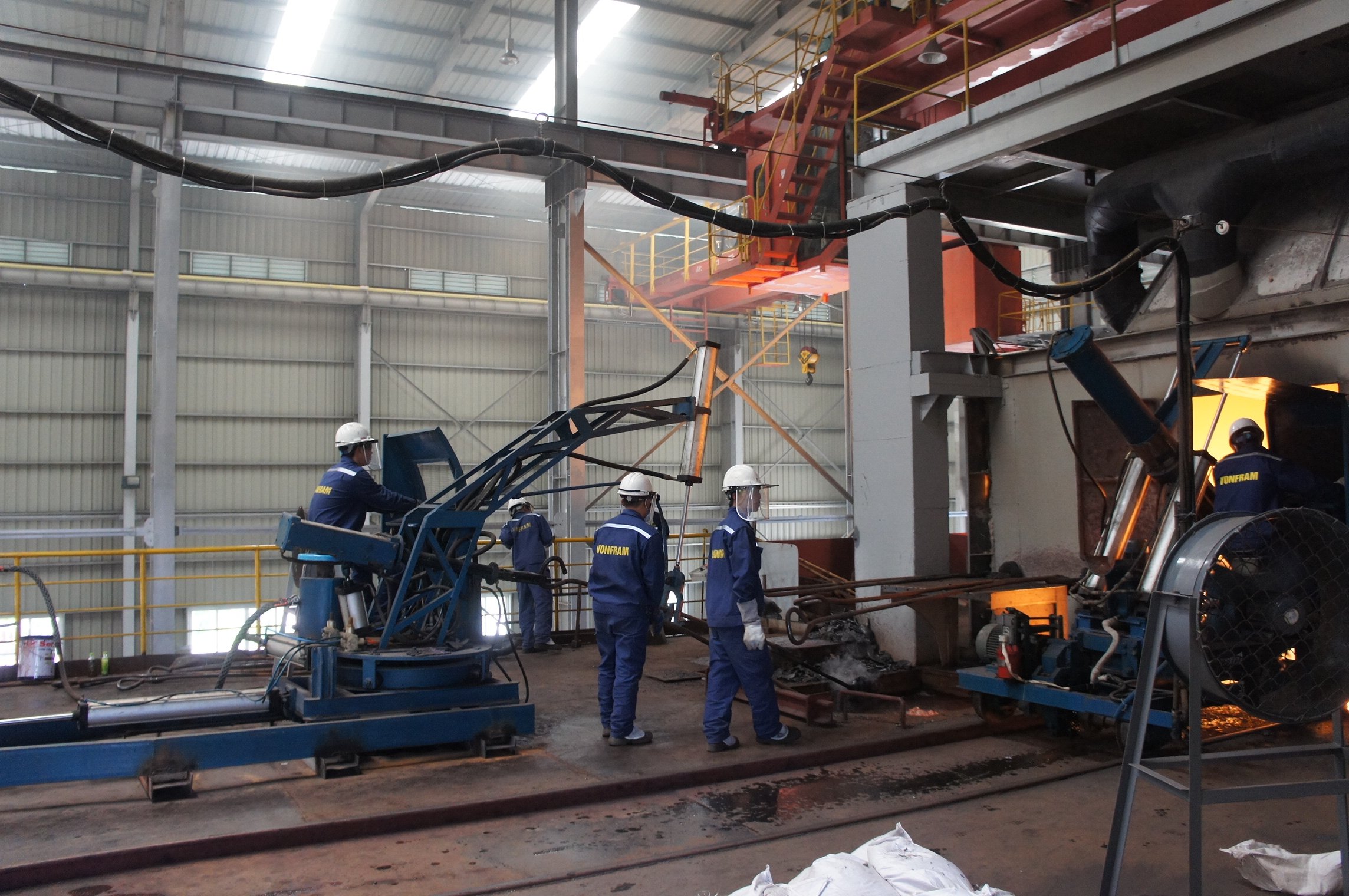
Tungsten manufacturing is a commonly overlooked component of many facets of our modern lives. Tungsten is a critical mineral at the heart of a number of key industries including Energy, Defense, Tech, Aviation, Medicine, Consumer goods and more. Largely seen as a mysterious metal by the general public at large and typically only known to be very heavy, tungsten’s utilisation in modern alloys because of its unique qualities, has allowed for vital technological advancements in these industries and positioned this metal as a foundation for many aspects of our daily lives and the prosperity and progression of modern society.
To unpack this critical mineral, we have compiled a list of 50 interesting facts involved in the tungsten manufacturing process.
Tungsten Manufacturing Facts
- At 3422°C (6192°F), tungsten has the highest melting temperature of any metal.
- “Tungsten” is derived from the Swedish terms “tung” and “sten,” signifying “heavy stone.”
- The two main minerals from which tungsten is manufactured from are scheelite and wolframite.
- Of all metals, tungsten has the highest tensile strength.
- Tungsten manufactured into tungsten carbide is almost as hard as diamond and twice as rigid as steel.
- Because of its endurance and high melting point, tungsten is employed in light bulb filaments.
- Similar to gold, tungsten has a density that is 19.3 times greater than that of water.
- Since tungsten carbide is strong and resistant to wear, it is widely utilised in cutting tools.
- Tungsten is utilised in paint manufacturing as well as metal evaporation processes.
- More than 350 years have passed since tungsten was discovered.
- Because of its low thermal expansion coefficient, tungsten is a valuable material for high-precision instruments.
- Because of its great strength and resistance to heat, tungsten manufacturing is used frequently to make alloys found in aeronautical applications.
- Burrs made of tungsten carbide are indispensable for metalworking and machining.
- Tungsten’s high density makes it an ideal material for kinetic energy penetrators.
- Nuclear reactors are manufactured with tungsten alloys because of their high temperature and radiation resistance.
- Applications for tungsten manufacturing in military technology are numerous and include munitions that can penetrate armour.
- The electrical conductivity of tungsten is similar to that of copper.
- The production of X-ray tubes requires the usage of tungsten.
- Tungsten carbide rings are well-liked because of their longevity and resistance to scratches.
- Electronics and semiconductors are produced using tungsten.
- Because of its toughness, tungsten is a good material for industrial drills and saws.
- The high density of tungsten is used in ballast and counterweights.
- Superalloys that are made at high temperatures are made using tungsten.
- Because of tungsten carbide’s remarkable strength and endurance, mining tools employ it.
- In order to produce high-strength materials for aerospace and defense applications, tungsten manufacturing is essential.
- At high temperatures, tungsten has the lowest vapour pressure of all the metals.
- Pure tungsten is a hard, dense metal with a silvery-white colour.
- Based on its other name, wolfram, tungsten has the chemical symbol W and atomic number 74.
- Because of its extreme corrosion resistance, tungsten is appropriate for extreme environmental and high-performance settings.
- Electrodes used in welding are made from tungsten.
- Applications using high temperatures in furnaces benefit from tungsten’s high melting point.
- The elemental form of tungsten was initially isolated by two Spanish chemists Juan José and Fausto Elhuyar, in 1783.
- Superalloys for turbine blades in jet engines are made utilising tungsten manufacturing.
- Due to tungsten’s high density, counterweights for aeroplane control surfaces are made of it.
- The manufacturing of heating components and electrical connections requires tungsten.
- Cutting tools made of tungsten carbide remain rigid even at high temperatures, which makes them perfect for cutting metal.
- Glass-to-metal seals in electronics and lights are made of tungsten.
- Tungsten manufacturing is used in the tool and die business because of its capacity to generate stable carbides.
- Because tungsten resists high temperatures, it is employed in the manufacturing of rocket engine nozzles and missiles.
- Gyro rotors and balance weights in the aerospace sector are made of tungsten.
- Ammunition and ballistics are made with tungsten due to its density and toughness.
- Uses for tungsten alloys include radiation shielding for medical and industrial applications.
- Due to its comparable thermal expansion to borosilicate glass, tungsten is a good material for glass-to-metal sealing.
- High-speed steel is made from tungsten and is necessary for machining and cutting tools.
- Applications such as heat sinks and thermal management make use of tungsten’s strong thermal conductivity.
- Electronic phonograph pickup styluses and phonograph needles are made from tungsten.
- Sports equipment such as cleats and ski poles are made of tungsten carbide because of its strength and durability.
- The limited thermal expansion and high melting point of tungsten make it useful in electrical applications.
- Jewellery, especially wedding bands, are made from tungsten because of its exceptional strength and longevity.
- In the chemical industry, tungsten is used as a catalyst in the synthesis of artificial fuels and chemicals.
Due to its special properties and wide range of applications in many different industries, tungsten is becoming increasingly important in today’s technological developments. It is an essential part of many manufacturing processes and products because of its high melting point, tensile strength, and density. Tungsten’s contribution to improving the robustness, effectiveness, and usability of materials will continue to be crucial to the advancement of numerous industries as long as we keep researching and developing new ideas. To learn more about tungsten manufacturing, check out Tungsten Metals Group here: www.tungstenmetalsgroup.com.

